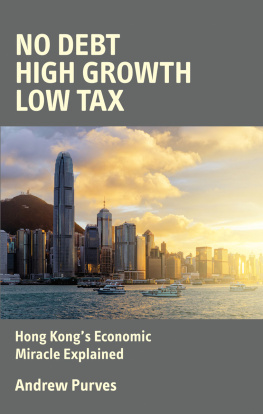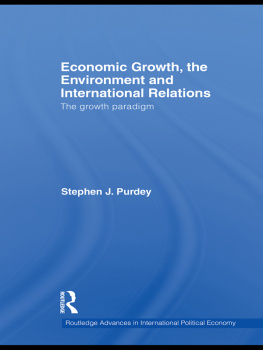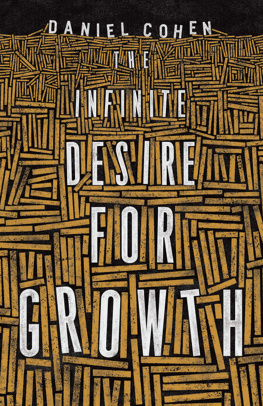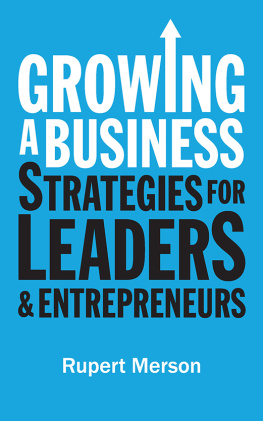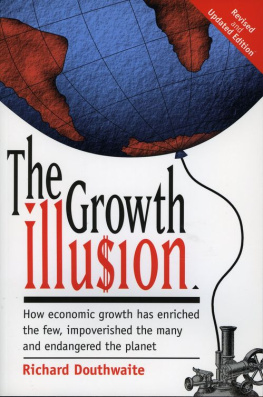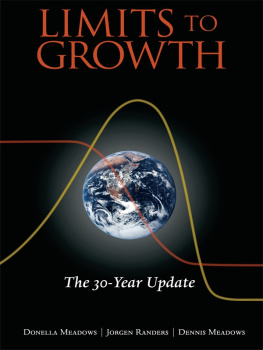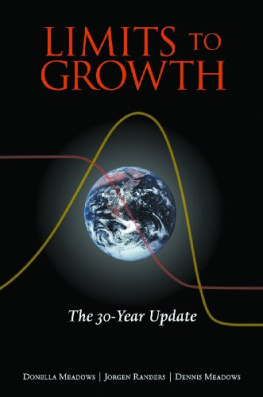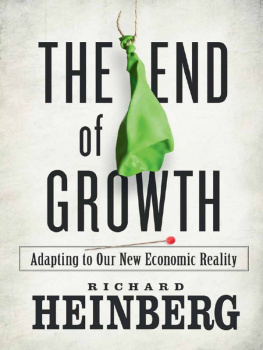Collision Course
Collision Course
Endless Growth on a Finite Planet
Kerryn Higgs
The MIT Press
Cambridge, Massachusetts
London, England
2014 Kerryn Higgs
All rights reserved. No part of this book may be reproduced in any form by any electronic or mechanical means (including photocopying, recording, or information storage and retrieval) without permission in writing from the publisher.
Library of Congress Cataloging-in-Publication Data
Higgs, Kerryn, 1946
Collision course : endless growth on a finite planet / Kerryn Higgs.
p. cm.
Includes bibliographical references and index.
ISBN 978-0-262-02773-1 (hardcover : alk. paper)
ISBN 978-0-262-32092-4 (retail e-book)
1. Economic history19711990. 2. Economic history1990 3. Economic developmentMoral and ethical aspects. 4. Economic policyMoral and ethical aspects. 5. Free enterprise. 6. Sustainable development. I. Title.
HC59.H523 2014
330.9dc23
2014003794
For Meg and Freddy,
in the hope that the world you inherit
will come to its senses soon.
If we are concerned about our great appetite for materials, it is plausible to seek to increase the supply, to decrease waste, to make better use of the stocks that are available, and to develop substitutes. But what of the appetite itself? Surely this is the ultimate source of the problem. If it continues its geometric course, will it not one day have to be restrained? Yet in the literature of the resource problem this is the forbidden question. Over it hangs a nearly total silence. It is as though, in the discussion of the chance for avoiding automobile accidents, we agree not to make any mention of speed!
John Kenneth Galbraith, 1958
Contents
Acknowledgments
A work of synthesis such as this would have been impossible without the research conducted by many others. To them I owe a great debt, both for their illuminating analysis and for having trawled through segments of the vast primary source material and pointed me in the right directions.
Thanks to all those who read parts of the early draftsBarbara Bloch, Mary OSullivan, Barney Foran, Steve Keen, Laurene Kelly, Graham Wells, and Margot Oliver, as well as to Stan Malinowitz, for running an economists eye over the final draft of chapter 6. Thanks to Dennis Meadows for providing his historical perspective on the World3 model; to all those who gave permission to include their graphs and tables; and to Riley Dunlap, Ross Buckley, Ramachandra Guha, Rogate Mshana, Bob Ward, Cliff Cobb, Sharon Beder, Pasquale Tridico, Jesse Ausubel, TRK Somaiya, Sharan Burrow and the secretariats of Eurostep and the Club of Rome for prompt and helpful answers to email inquiries. Thanks also to Miranda Martin, Clay Morgan, Deborah Cantor-Adams, and Marjorie Pannell at the MIT Press for their help in seeing the work to publication.
Special thanks to Natasha Topschij for creating the map in figure 9.1, and to the people who read major parts of the original text and offered their thoughts on many aspectsJen St. Clair, who shares a lifelong enthusiasm for the limits ideas, and Pete Hay, who advised on several versions of the initial draft and gave unfailing encouragement and perceptive critique.
Very special thanks to Harriet Malinowitz, who insisted that my unending research should be written up, commented on drafts at many stages, and gave generously of her time and energy to assist with the revision and re-editing of the entire book over her summer break in 2013.
Thanks, too, to the School of Geography and Environmental Studies at the University of Tasmania for its support, and to the UTAS library staff, who were ever reliable, well beyond the call of duty. Special thanks to the staff at Document Delivery, Launceston; they were terrific, and the research would have been impossible without them.
Abbreviations and Acronyms
AAAS | American Association for the Advancement of Science |
ABARE | Australian Bureau of Agricultural and Research Economics |
ABC | Australian Broadcasting Corporation |
ABC (US) | American Broadcasting Company |
ACCI | Australian Chamber of Commerce and Industry |
ACF | Australian Conservation Foundation |
ACSH | American Council on Science and Health |
AEI | American Enterprise Institute |
AFL | American Federation of Labor |
AiG | Australian Industry Group |
AIGN | Australian Industry Greenhouse Network |
ALP | Australian Labor Party |
APEC | Asia-Pacific Economic Cooperation |
ASSC | Advancement of Sound Science Center |
AusAID | Australian Agency for International Development |
BCA | Business Council of Australia |
CASSE | Center for the Advancement of the Steady State Economy |
CDFE | Center for the Defense of Free Enterprise |
CED | Committee for Economic Development (US) |
CEI | Competitive Enterprise Institute |
CFCs | chlorofluorocarbons |
CIO | Congress of Industrial Organizations |
CIS | Centre for Independent Studies (AUS) |
CPI | Committee on Public Information (US) |
CPS | Centre for Policy Studies (UK) |
CRA | Conzinc Rio Tinto Australia |
CSIRO | Commonwealth Scientific and Industrial Research Organisation (AUS) |
DFAT | Australian Government Department of Foreign Affairs and Trade |
EA | Enterprise Australia |
EC | European Commission |
EIA | Energy Information Administration (US) |
EPA | Environmental Protection Agency |
EROI | energy return on investment |
ETS | emissions trading scheme |
EU | European Union |
FAIR | Fairness and Accuracy in Reporting (US) |
FAO | Food and Agriculture Organization (UN) |
FEE | Foundation for Economic Education (US) |
FSA | financial services agreement |
GATT | General Agreement on Tariffs and Trade |
GATS | General Agreement on Trade in Services |
GEO | Global Environmental Outlook (UNEP) |
I=PAT | Impact = Population Affluence Technology |
ICC | International Chamber of Commerce |
IEA | Institute of Economic Affairs (UK) |
IEA | International Energy Agency (OECD) |
IIED | International Institute for Environment and Development (FAO) |
ILO | International Labour Organization (UN) |
IMF | International Monetary Fund |
IPA | Institute of Public Affairs (Australia) |


